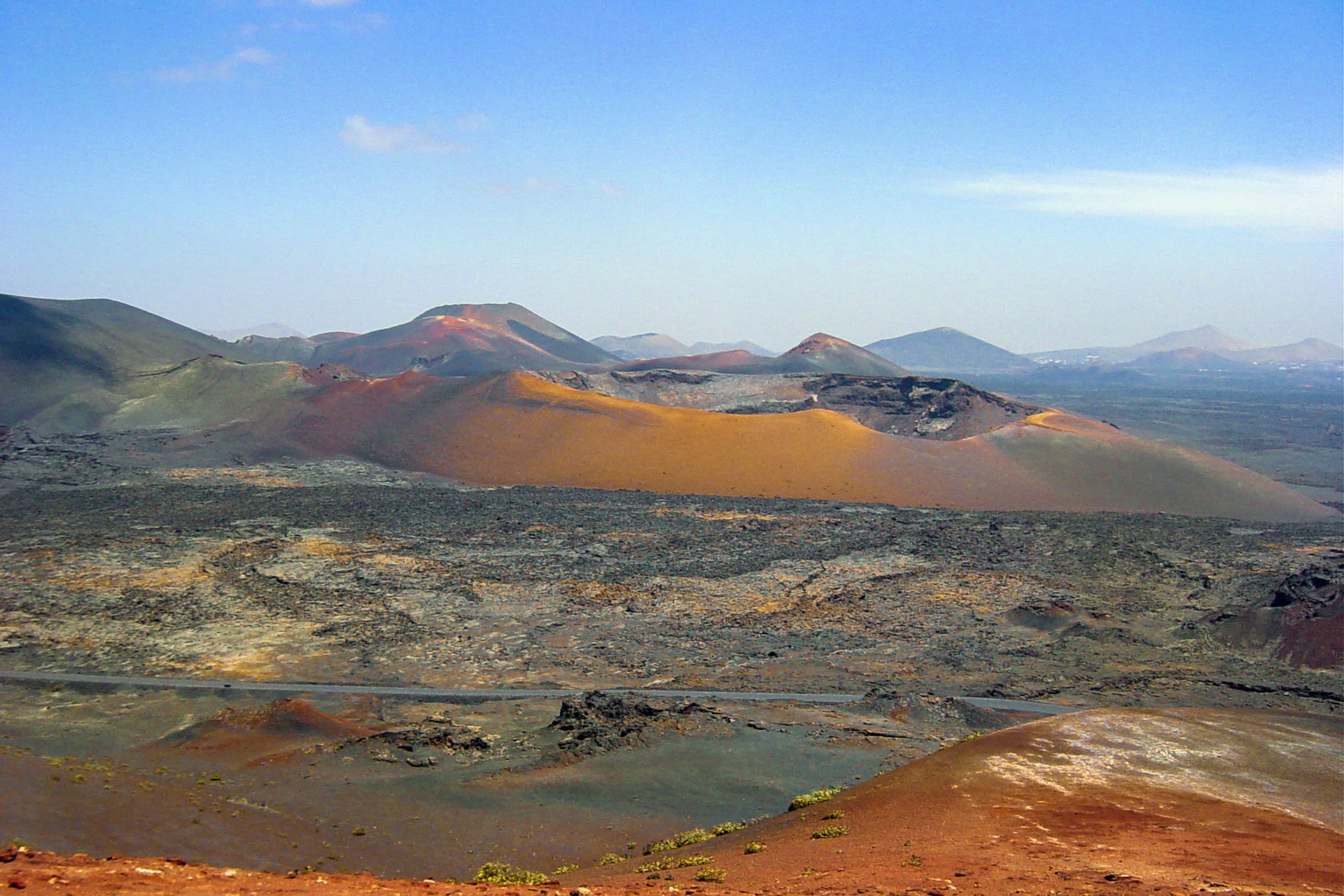Located in the Canary Islands, off the coast of Africa, the volcanic island of Lanzarote attracts millions of tourists all year round. With popular resorts such as Playa Blanca, Costa Teguise and Puerto del Carmen, glorious beaches and natural attractions there are many things to do in Lanzarote for visitors of all ages. Volcanic activity has created an almost moonlike landscape on the island with many notable geological features such as the Timanfaya National Park and the underground caves of Jameos del Agua and La Cueva de los Verdes. Visitors needn’t worry about the volcanoes as the last recorded eruptions of note were in the 1730s so the island is now considered to be dormant.
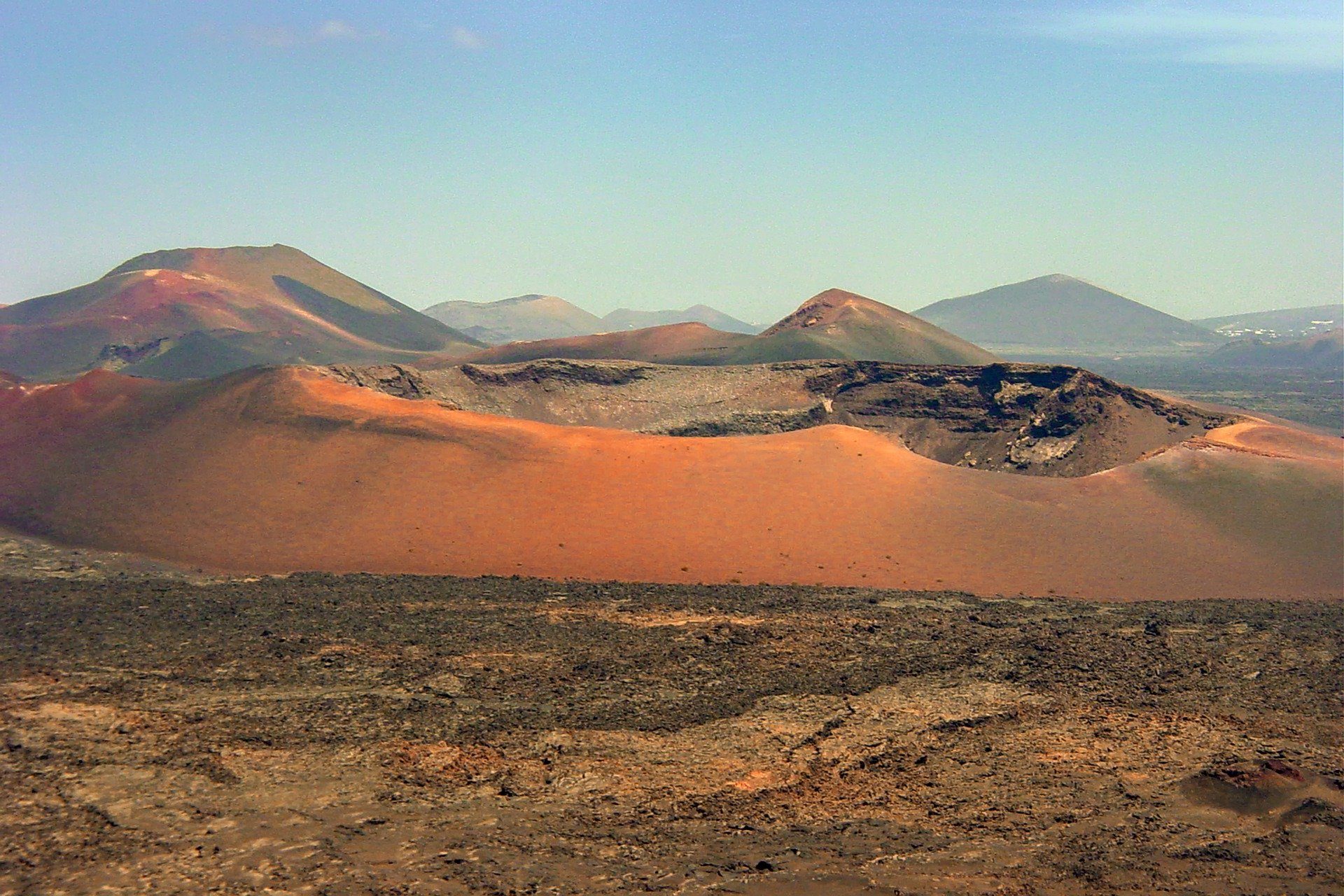
Top 5 Things to See in Lanzarote
Explore Timanfaya National Park
Located in the south-west of the island, Timanfaya National Park is home to spectacular volcanic landscapes with impressive craters, lava fields and geothermal activity. The last volcanic eruptions were in the 18th and 19th centuries. Visitors can drive to the park then take a bus tour around the lunar landscape. Alternatively, you can book organized tours from all the main holiday resorts in Lanzarote.
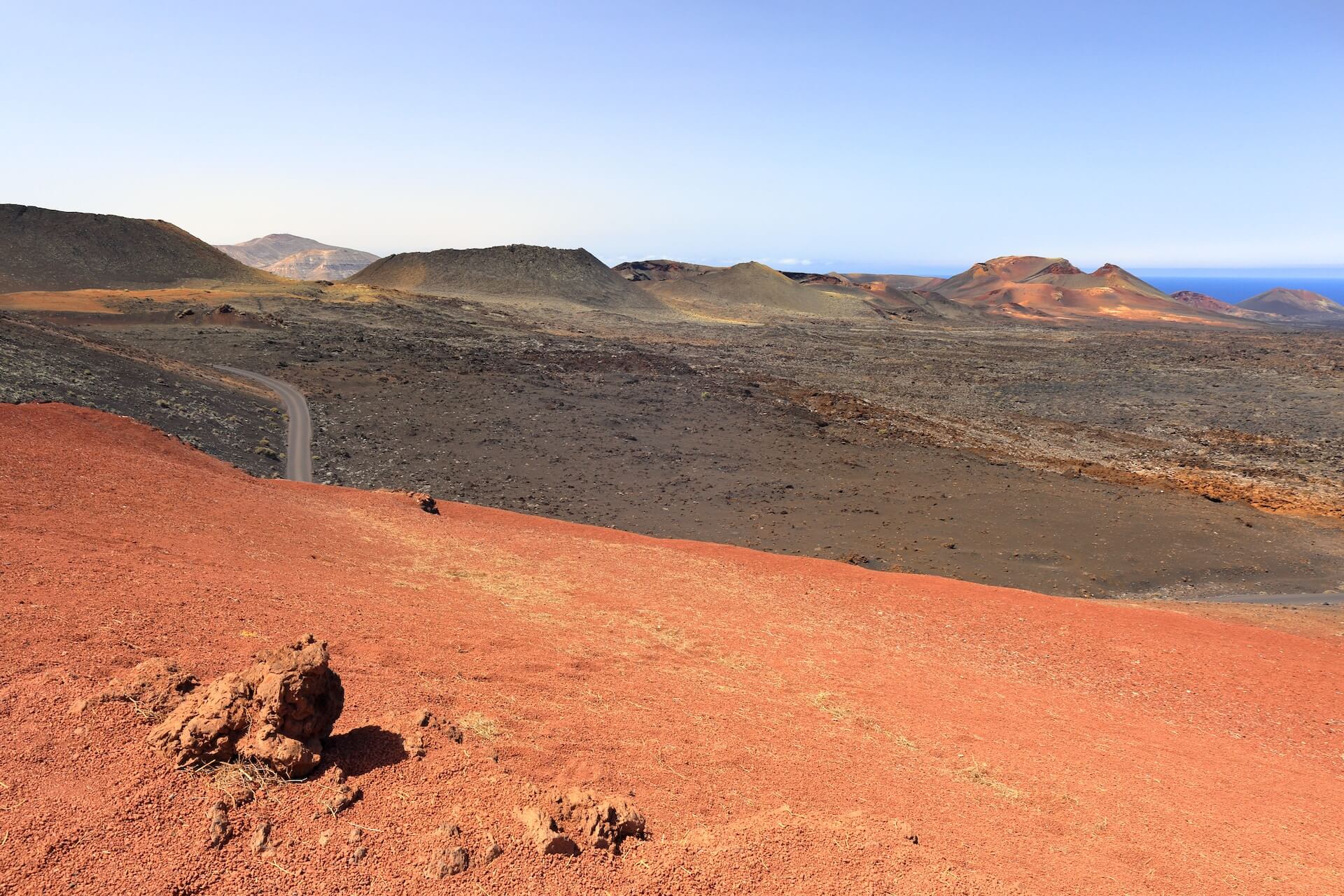
Personally, I’d recommend the guided tours which are very informative and teach you all about the park’s history and geology. A lasting memory of the guided tour is a demonstration of the geothermal activity in which the guide pours water into a hole in the ground which is instantly transformed into steam.
If you visit Timanfaya around lunchtime you should plan on having lunch at the El Diablo restaurant where meals are cooked using geothermal heat. The restaurant is located at the heart of the park and serves traditional Canarian cuisine.
Cueva de los Verdes
The Cueva de los Verdes is located in the municipality of Haría in the north of the island. It is a is a lava tube which was formed by a volcanic eruption some 4,000 years ago. Over the centuries this natural cave system has served as a hideout for the island’s inhabitants during pirate attacks. Nowadays the cave is one of Lanzarote’s most popular tourist attractions where visitors can take guided tours through a series of underground tunnels and chambers filled with incredible rock formations. There is also a concert hall with a capacity for 500 people within the caves which hosts summer concerts.
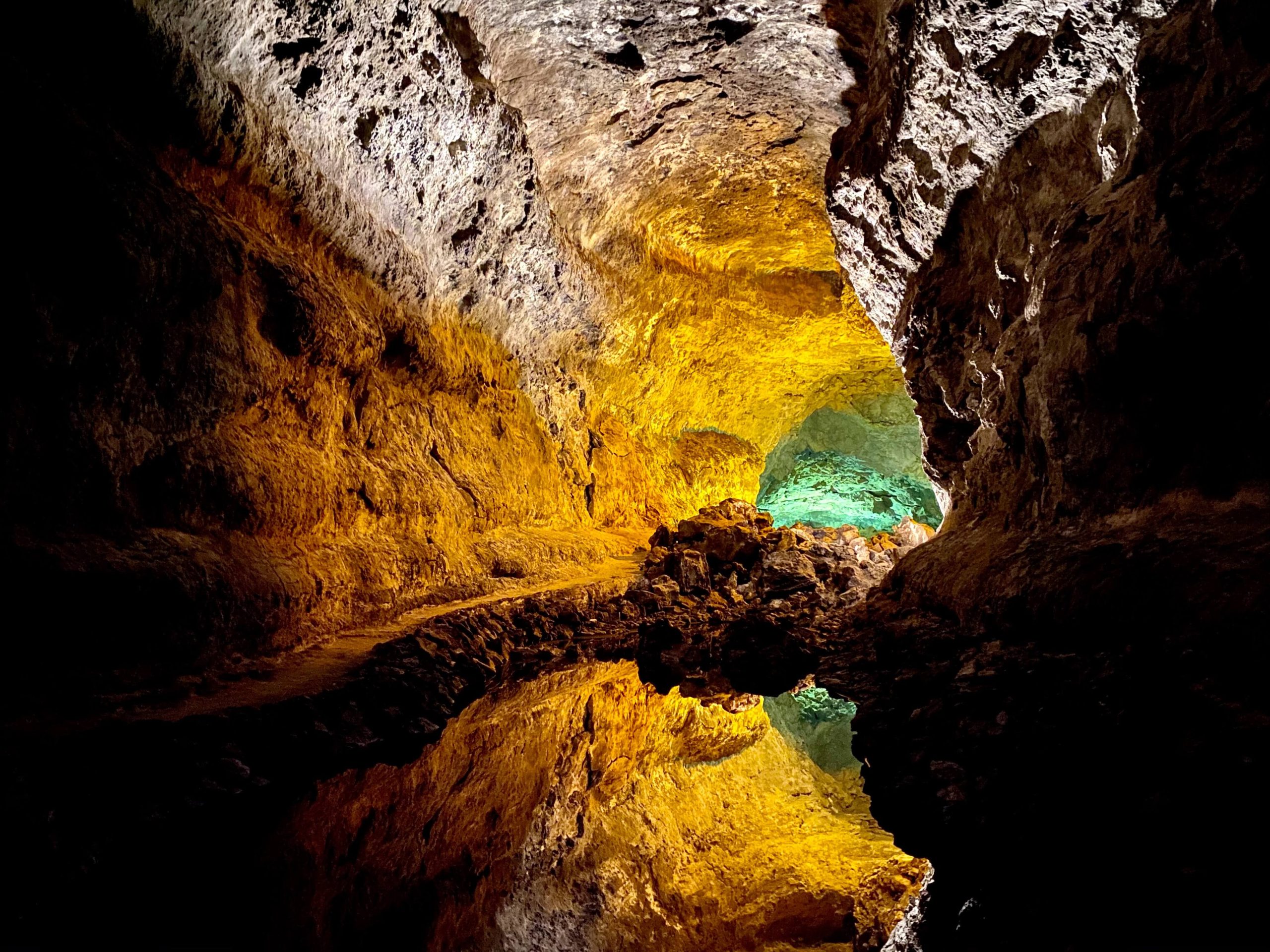
Jameos del Agua
Just 800m to the east of the Cueva de los Verdes is the Jameos del Agua which is another of the island’s most visited attractions. It is part of the same volcanic cave system as the Cueva de los Verdes which resulted from the eruption of the La Corona volcano thousands of years ago. This natural feature has been transformed into a remarkable cultural and recreational centre by the aforementioned César Manrique.
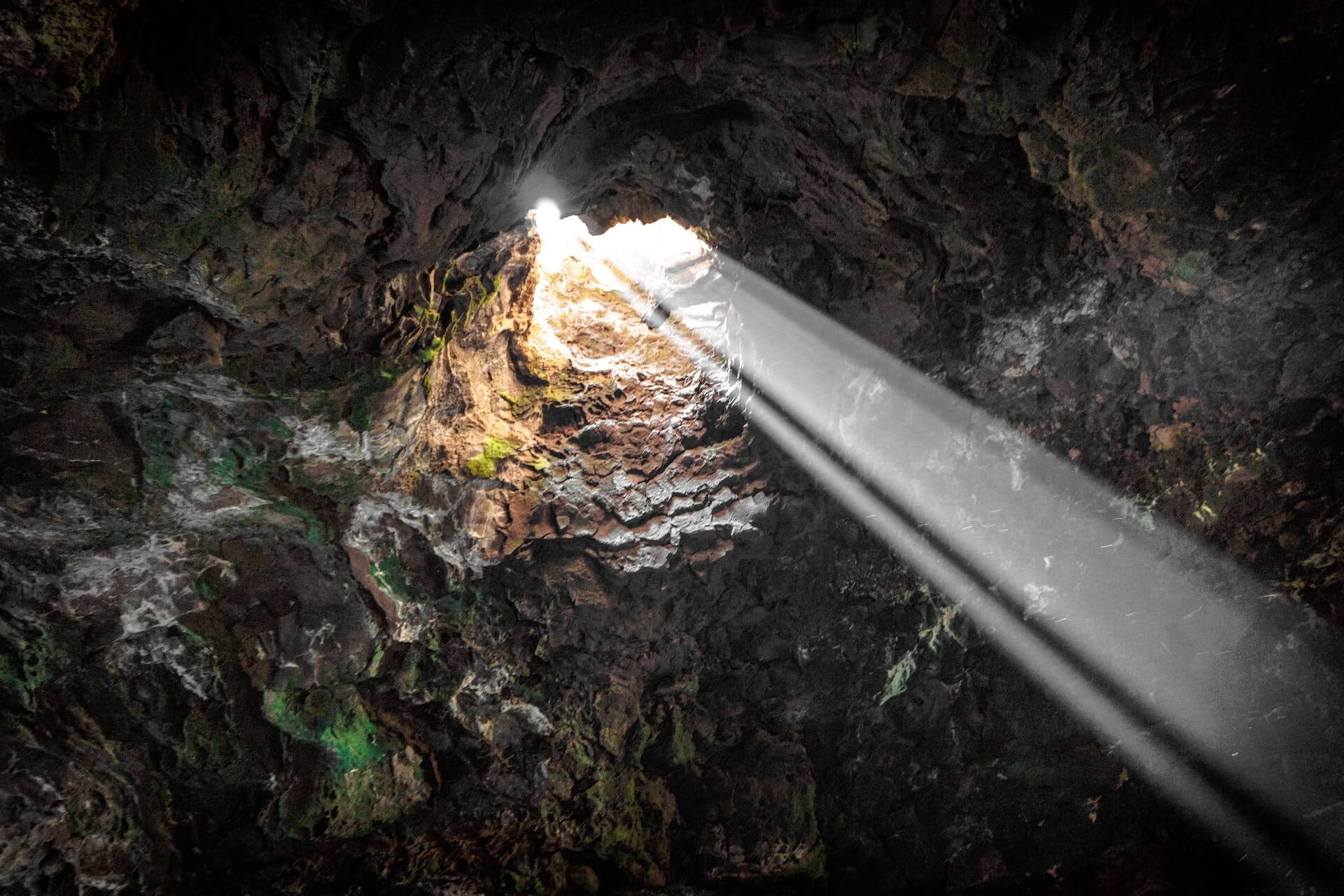
The Jameos del Agua is home to a stunning underground lake which is fed by seawater that filters through the rocks. The complex also houses a concert hall built into a natural cave which is a popular venue for concerts thanks to its remarkable acoustics.
Mirador del Rio
The Mirador del Rio viewpoint stands on a cliff in the north of the island from where visitors get spectacular views of the neighboring island of La Graciosa and the surrounding landscapes. It was designed by César Manrique who took two years ensuring that the structure blended seamlessly with its surroundings and preserved the distinctive landscape features which define his work. Inside the Mirador are notable sculptures by Manrique and visitors can take a spiral staircase to an upper terrace where you can watch the sunset from the café area.
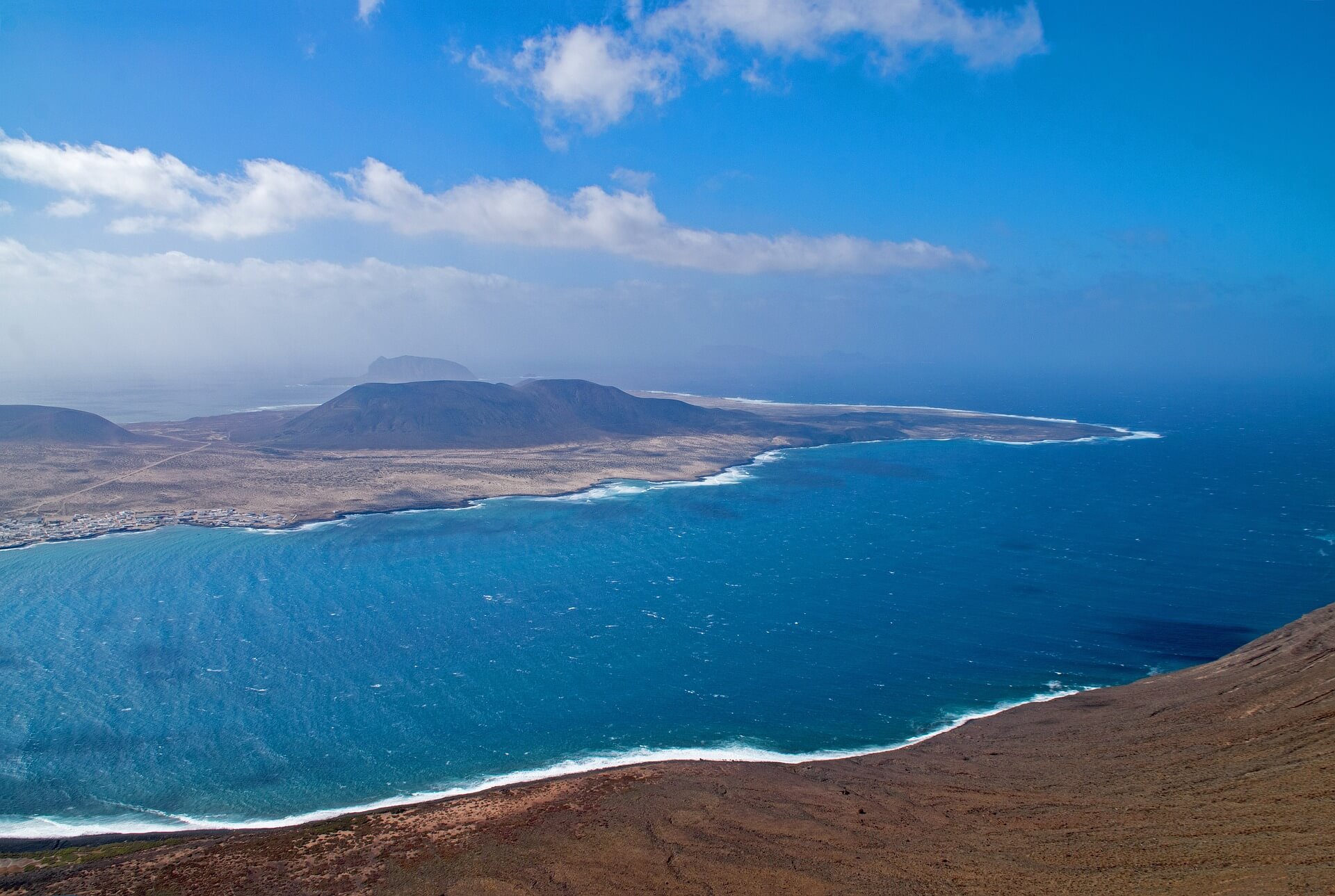
Manrique’s Jardín de Cactus
The Jardín de Cactus is a cactus garden located in the village of Guatiza in the north-east of Lanzarote. It was was created in 1991 and was César Manrique’s final project. The garden is situated in a former quarry where volcanic sand is used to retain moisture. The fascinating site is home to around 500 species of cactus and succulents from North and South America, Madagascar and other desert and arid regions of the world. The Jardín de Cactus is a fascinating place for anyone interested in the flora of the Canary Islands.
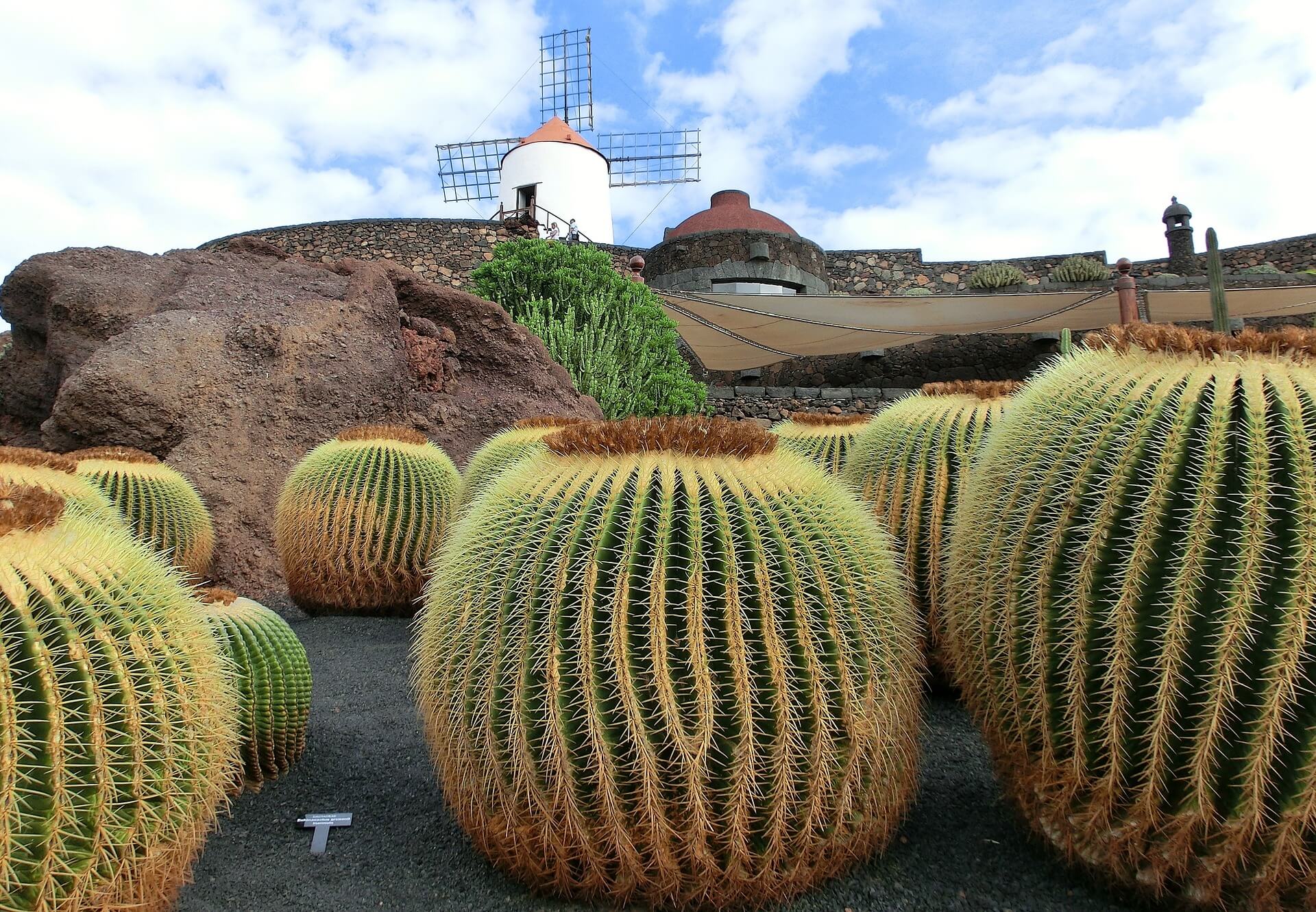
Top 12 Things to Do in Lanzarote
Discover the Best Beaches in Lanzarote
Lanzarote is home to some of the most beautiful beaches in the Canary Islands. Whether you’re looking for a secluded cove or a lively beach with plenty of activities, you’ll find what you’re looking for here. Here are some of our top recommendations:
Playa Grande:
Not surprisingly Playa Grande in Puerto Del Carmen is the busiest in Lanzarote. It is a long, sandy beach with excellent facilities which is overlooked by a long promenade which is home to many of the resort’s shops, bars and restaurants.
Playa de Los Picollos:
Just east of Puerto del Carmen is Playa de Los Picollos which is a popular windsurfing beach. A little further uptake coast is Playa de Matagorda is ideal for swimming and wind surfing but isn’t the quietest of places as it’s near the runway of Arrecife airport.
Playa Flamingo:
Situated in Playa Blanca, this is one of the best beaches on the island. This stunning coastline features golden sands and crystal clear waters, making it perfect for swimming and diving. The beach is well-protected and supervised, ensuring a safe swimming experience without strong currents so it’s ideal for children.
Playa Dorada:
Located near Playa Flamingo, Playa Dorada is another golden, sandy beaches which is considered as one of the best beaches in Lanzarote. Protected from strong winds, the sea here is calm, crystal clear and the sand feels like powder. From the beach, you can enjoy a stunning view of Fuerteventura in the distance. Boat trips to the nearby Lobos Island and dolphin watching excursions are popular from Playa Dorada. The beach is another popular choice for families with children.
Playa del Papagayo:
This famous beach is also located close to Playa Blanca within the Monumento Nacional de los Ajaches. It is made up of a series of small coves which have fine white sands and crystal clear waters. Although not easily accessible, these beaches are amongst the most popular in Lanzarote. Bus #30 from Playa Blanca drops passengers off within a 20 minute walk of the beach, otherwise you can travel by car to Playa Mujeres or Playa del Pozo then walk between beaches. There are boat trips from Puerto Calero to the Papagayo Beaches for tourists staying up the coast in Puerto del Carmen and Costa Teguise.
Playa de Famara
Famara Beach is a beautiful expanse of golden sand along Lanzarote’s north-west coast which is backed by the dramatic Riscos de Famara cliffs. The beach is renowned for its powerful waves and constant winds, making it a paradise for surfers, windsurfers and kitesurfers from around the world. Despite its popularity amongst water sports enthusiasts, Famara remains relatively uncrowded, offering visitors a sense of isolation and natural beauty. The small fishing village of Caleta de Famara at the beach’s southern end provides basic amenities and maintains a laid-back, bohemian vibe that complements the wild coastal scenery.
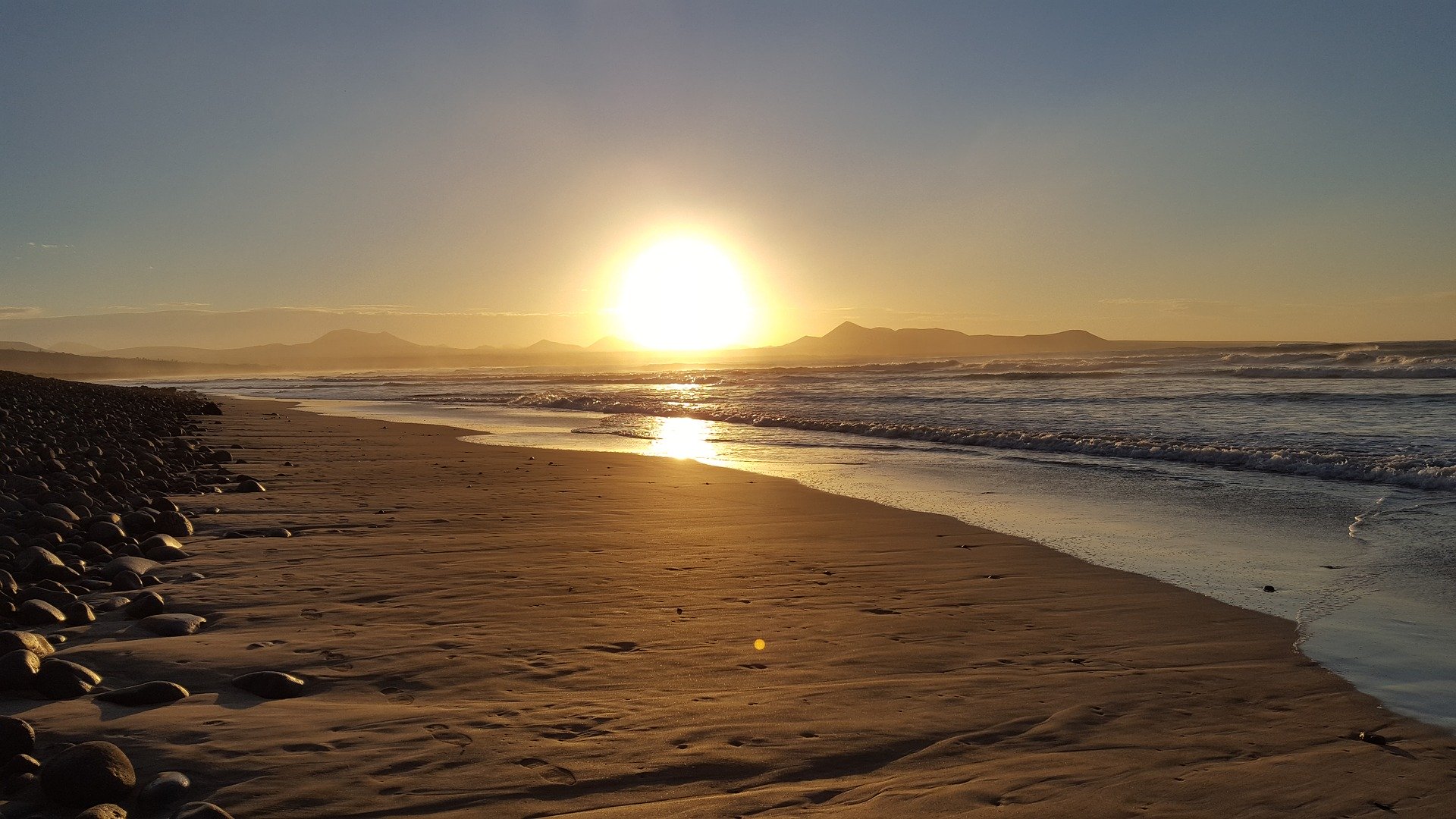
Playa del Reducto:
This is the urban beach of Arrecife, the island’s capital. It has calm waters and golden sand making it another good choice for families with children. Playa del Reducto is accessible by local bus from Puerto del Carmen but if you’re making your own way there by car there’s plenty parking available. A short walk from the eastern edge of the beach leads to El Charco de San Gines, a pretty lagoon surrounded by restaurants where local fishermen leave their small boats.
Playa del Caletón Blanco:
Located on the very north coast this beach is known for its fine, white sand and shallow waters. The formation of the volcanic rock provides lots of little sheltered bays which are great for swimming and sunbathing. The beach is accessible by local bus and parking is available for hire cars.
Playa de las Conchas:
If you take a day trip to the island of La Graciosa you should visit this tropical paradise which lies on its north-west coast. This beautiful beach with its soft, white sand and patches of low vegetation tends to have relatively calm, clear waters. Off the coast you can see the uninhabited islands of Montaña Clara and Alegranza which are part of the Chinijo Archipelago.
Attend the Annual Carnival Festival
Carnival is one of the biggest festivals in Lanzarote, typically taking place in February or March. The carnival celebrations span over a couple weeks and include colourful parades, dances, concerts, competitions and street parties. Participants dress up in elaborate costumes and masks. Each year has a different overarching theme. The festivities kick off with the Opening Parade in Arrecife, Lanzarote’s capital. Other key events include the Burial of the Sardine parade signifying the end of carnival and the Grand Parade in Puerto del Carmen featuring extravagant floats. Carnival is a lively time to experience the island’s vibrant culture and party spirit.
Watch the Sunset From El Golfo
Located near the village of Yaiza on the southern edge of the Timanfaya National Park, El Golfo is a spectacular lagoon located in the crater of a volcano. This crater was submerged beneath the Atlantic Ocean, forming a saline lagoon known as El Lago Verde. The water is connected to the ocean through underground tunnels. Designated as a nature reserve, El Golfo is a fascinating place to visit because of its green reflections (created by algae on the seabed) which contrasts with the blue sky. In front of the green lagoon, you’ll find the ocean with its powerful waves crashing against the black volcanic sand. This is a great place from which to watch the sunset.
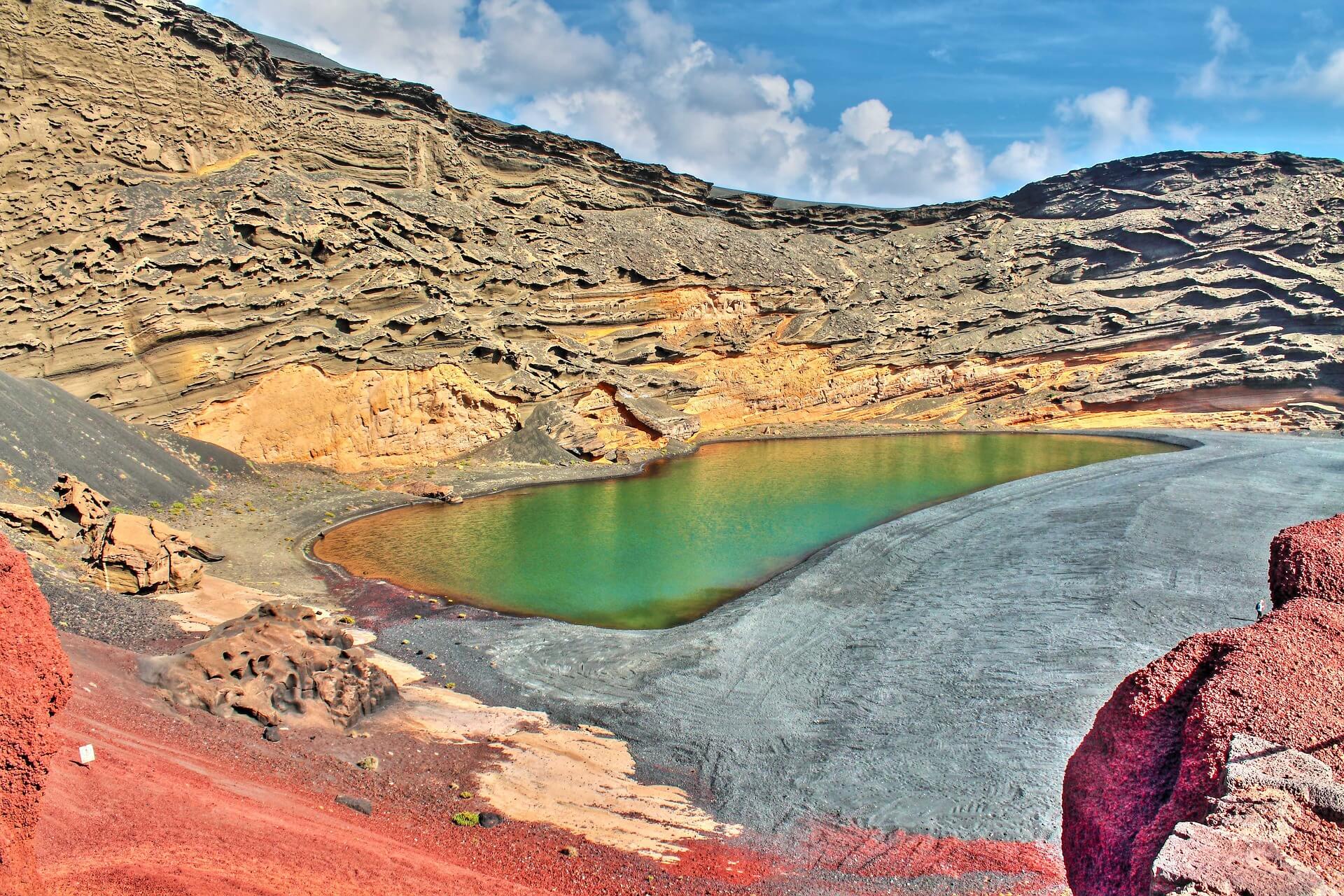
Visit the Fundación César Manrique
One name which constantly crops up when researching things to do in Lanzarote is that of César Manrique. This renowned painter, sculptor and architect was born in Arrecife in 1919 but left the island at the age of 17. He returned in 1966 having studied in Madrid and Tenerife before living in New York where he held various exhibitions.
His vision for Lanzarote was to preserve its natural beauty and traditional architecture while promoting sustainable development and tourism. He believed that the island’s unique landscape and cultural heritage were its most valuable assets and he worked tirelessly to protect them.
Manrique is responsible for the creation of many of Lanzarote’s most iconic landmarks including the Jameos del Agua, the Mirador del Rio and the Jardin de Cactus. He designed these attractions to blend seamlessly into the island’s landscape, using natural materials and local architecture to create structures that complemented rather than detracted from the beauty of the island. His vision has helped to make Lanzarote one of Europe’s most fascinating holiday destinations.
The Fundación César Manrique is a museum and cultural centre located in the town of Taro de Tahíche, just inland from the popular resort of Costa Teguise. It was built on a lava field in the 1960s by Manrique who lived and worked there for many years. Today it is a popular tourist attraction which which includes a series of interconnected volcanic bubbles which have been transformed into unique living spaces and studios. It serves as a great place to understand Manrique’s artistic philosophy of blending architecture with the island’s volcanic landscape.
Inside the house visitors can see Manrique’s personal art collection which includes works by Picasso, Miró and Chillida as well as his own creations. The museum provides a unique insight into the life and work of one of the island’s most famous sons and showcases the creativity and innovation that have made Lanzarote such a unique place to visit.
See Superyachts in Marina Puerto Calero
Located just 6km west of Puerto Del Carmen, this is one of Spain’s most luxurious marinas. It has berths for 450 yachts and frequently hosts some of the world’s largest superyachts measuring up to 75 metres in length. Visitors to the marina can take a stroll around these multi-million euro vessels berthed there and stop at one of the stylish bars and restaurants overlooking the marina. By day you can take boat trips along the coast from Puerto Calero or book deep sea fishing trips which are a great experience in the Canary Islands. You can also learn to dive at one of the PADI accredited diving schools.
Take a Catamaran Cruise to the Papagayo Beaches
Playa Papagayo lies on the south-eastern tip of Lanzarote and is the island’s most famous beach. It is located inside the Los Ajaches Natural Park and features golden sands surrounded by protective rocks and relatively calm waters. One of the island’s most popular boat trips is the catamaran tour which departs from Puerto Calero. This is a great way to explore the Papagayo Beaches for holidaymakers staying in Puerto del Carmen or Costa Teguise. If you’re staying in Playa Blanca you can easily get to these beaches including the beautiful Playa Mujeres which lies just 8km east of the resort.
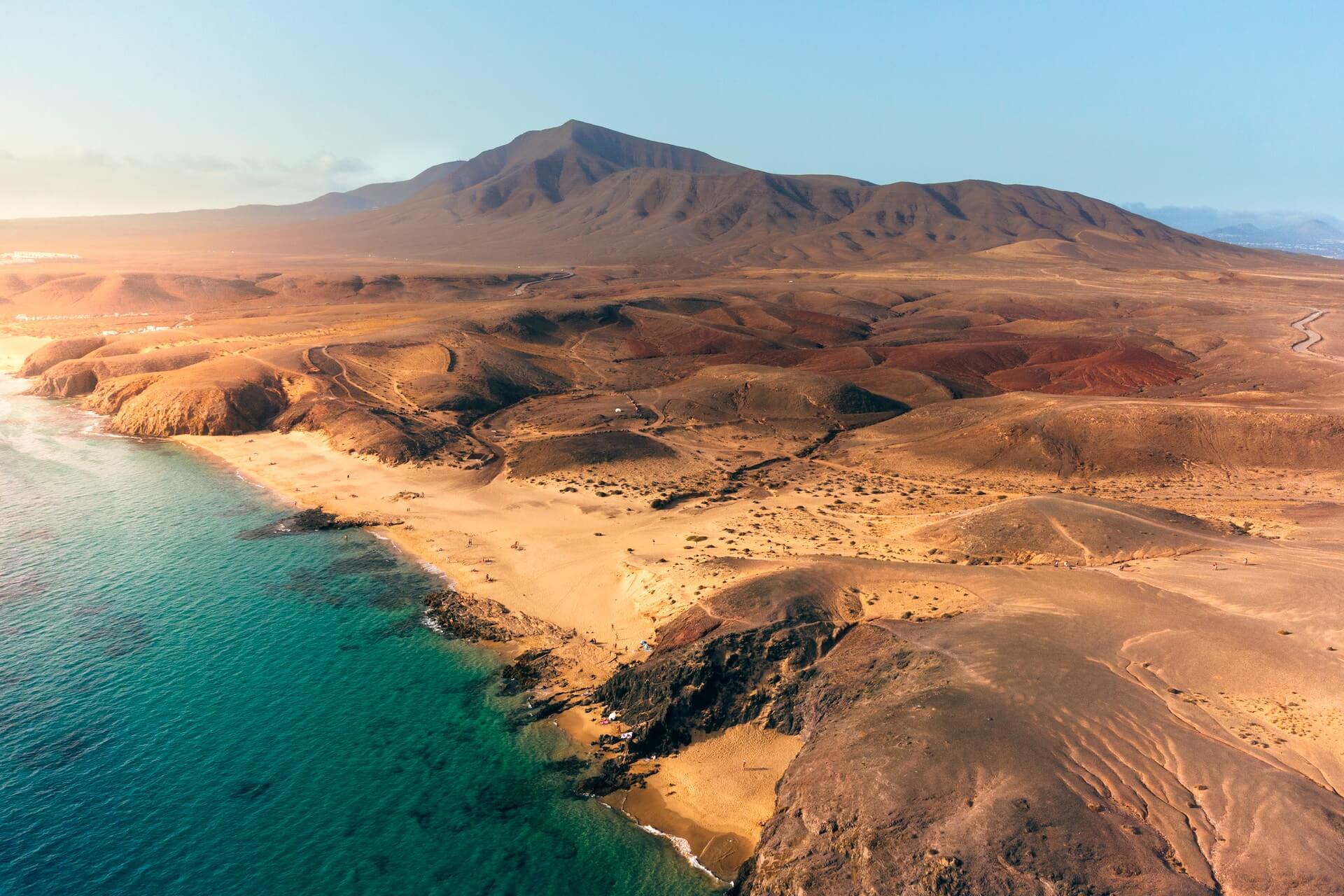
Learn to Surf in Lanzarote
Lanzarote offers excellent surfing conditions year-round, with the best waves typically occurring between October and March. The island’s northern and north-western coasts receive consistent swells from the North Atlantic, providing suitable conditions for surfers of various skill levels. Famara Beach is widely regarded as the premier surfing destination, offering a 6km stretch of beach break with multiple peaks.
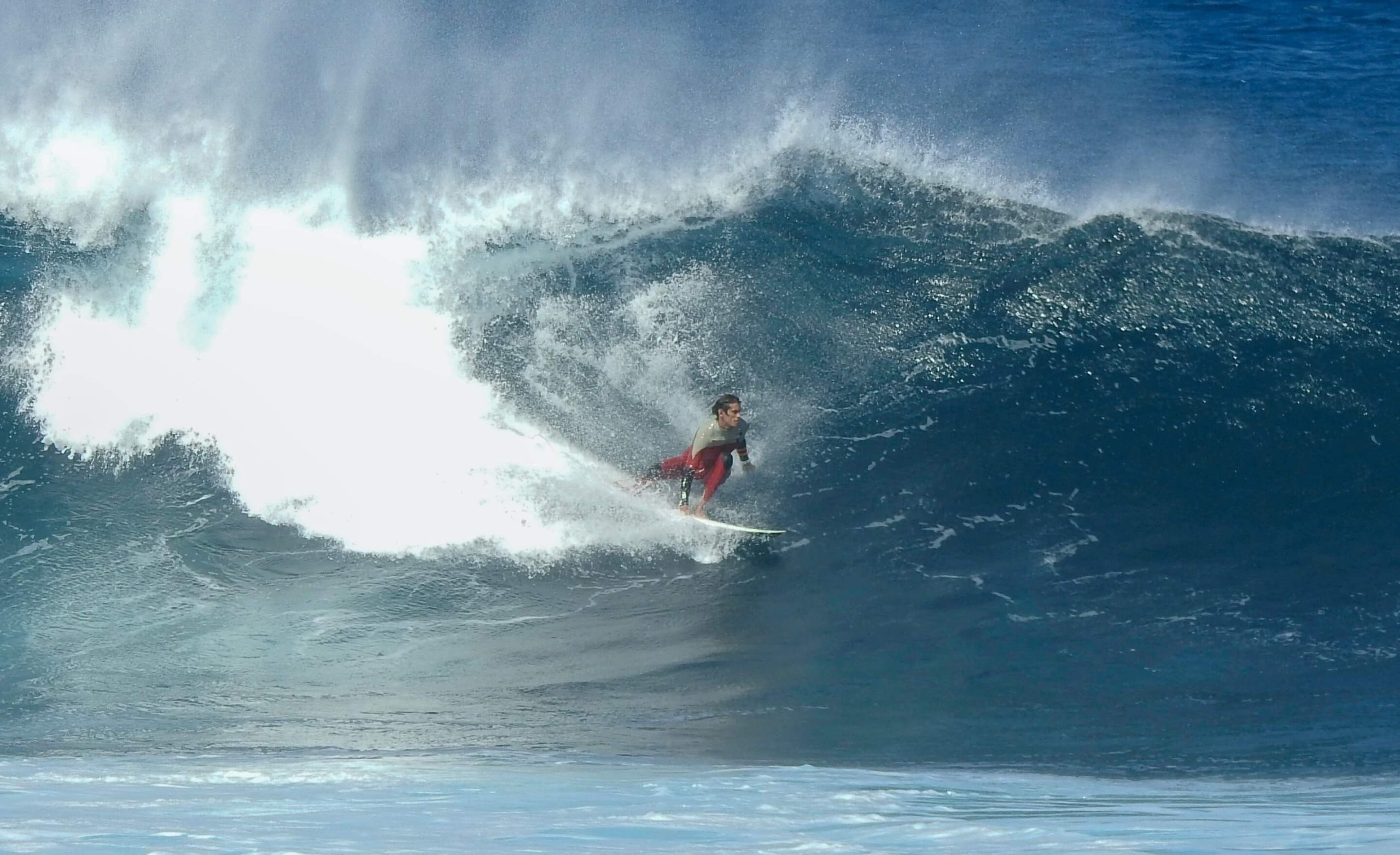
Other notable surf spots include Playa de San Juan and La Santa to the south-west of Famara together with Arrieta on the north-east coast. In the south of the island, Playa Blanca offers surfing opportunities which are particularly suited to beginners. Several surf schools and rental shops are available in these resort areas which cater to both novice and experienced surfers.
Go Wine Tasting at One of the Island’s Bodegas
The history of winemaking in Lanzarote dates back to the mid-15th century when the first colonists brought in the vines. However, wine production wasn’t established until after the volcanic eruptions of the 1730s. These eruptions covered the island in ash forcing farmers to find a way to cultivate crops in the new, harsh environment. They discovered that the ash was an excellent insulator and they began to dig small pits in the ground to plant the vines. These ‘holes’ protected the vines from the strong winds which blow across the island and helped to retain moisture in the soil. Lanzarote was officially recognised as a Denominación de Origen in 1994 and has around 1,800 hectares under cultivation.
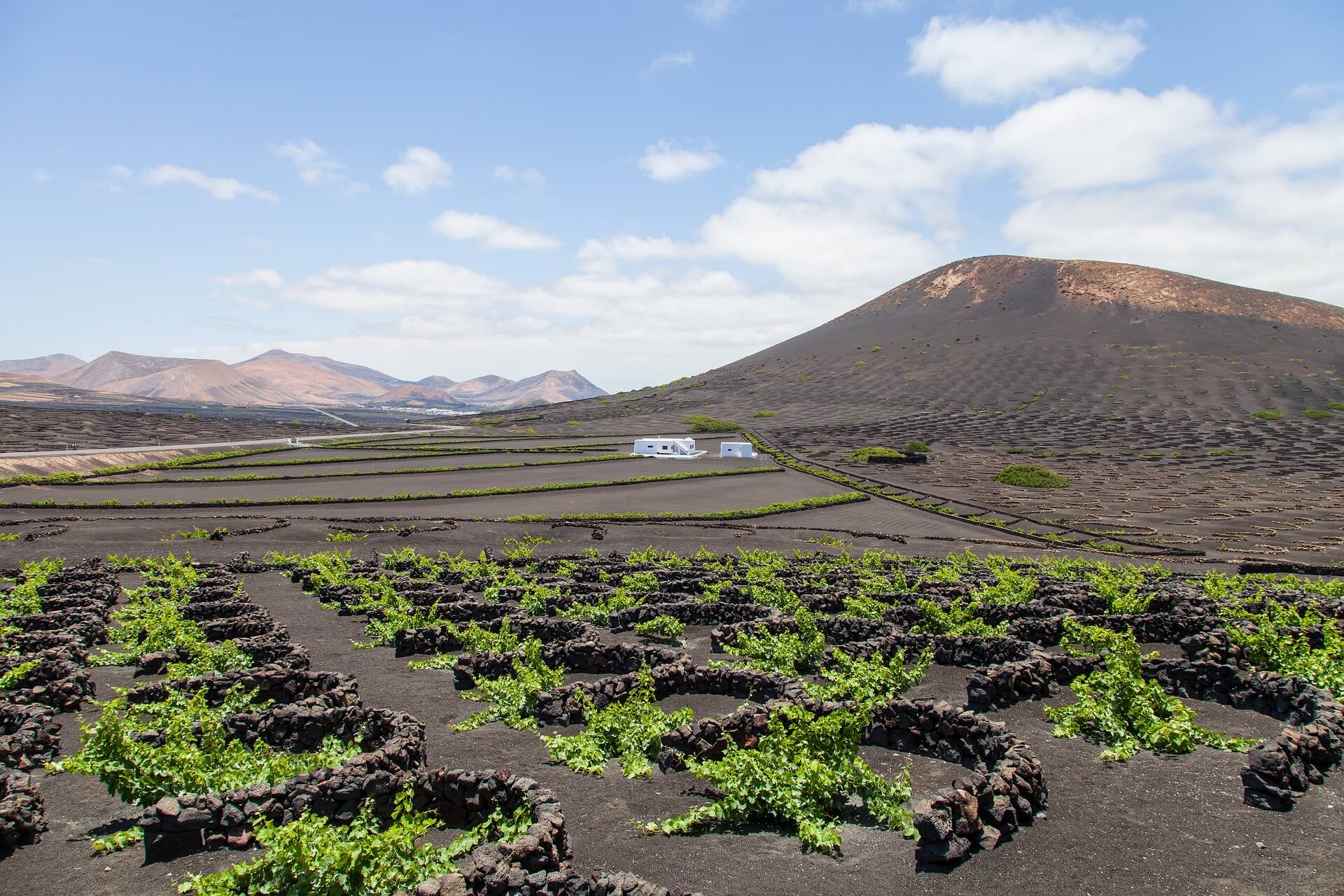
The island’s thriving wine industry has developed into an unlikely tourist attraction with several vineyards offering tours and tastings. Some of the most popular include Bodega La Geria, Bodegas Stratvs and Bodega El Grifo.
Take a Ferry Ride to La Graciosa Island
Visitors to Lanzarote can take a day trip to the neighbouring island of La Graciosa which lies off the north coast. The island is home to some beautiful beaches such as Playa de las Conchas and Playa La Francesa as well as some spectacular volcanic landscapes. To get there you can make your way to the ferry port at Órzola from where there are numerous daily crossings to Caleta de Sebo on the south-east coast of La Graciosa. The journey takes about 25 minutes. Alternatively, you can book a day trip to La Graciosa which includes transfers to the ferry port, the ferry ride and a tour of the island.
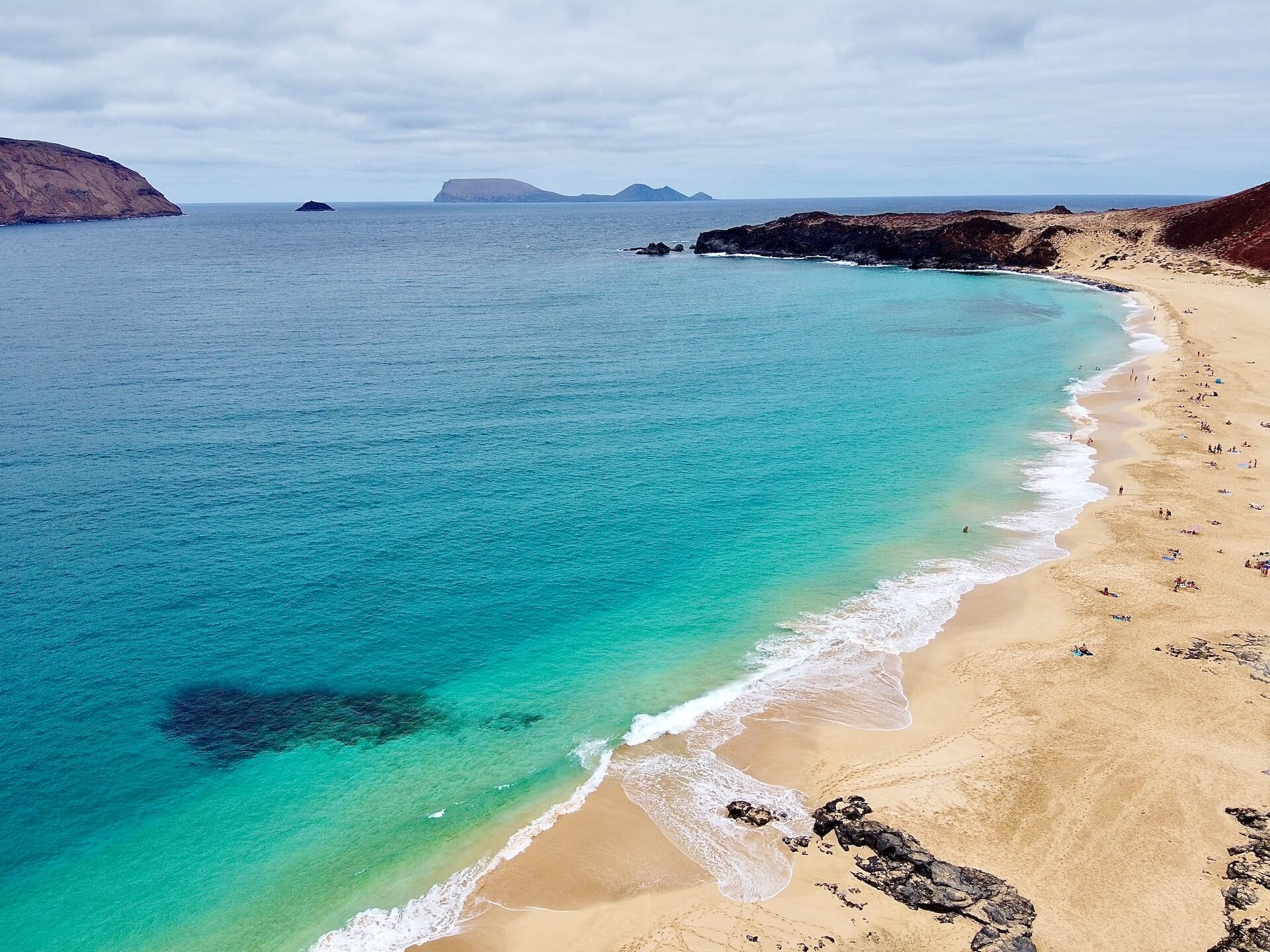
Visit Arrecife, the Island’s Capital
Arrecife is the oldest town on the island of Lanzarote which replaced Teguise as the island’s capital in the late 18th century. Today it is a busy port city which serves as the commercial and administrative centre of Lanzarote. Its population of around 65,000 represents almost half of the people living on the island. Some of the main places to visit on a day trip to the capital include the following:
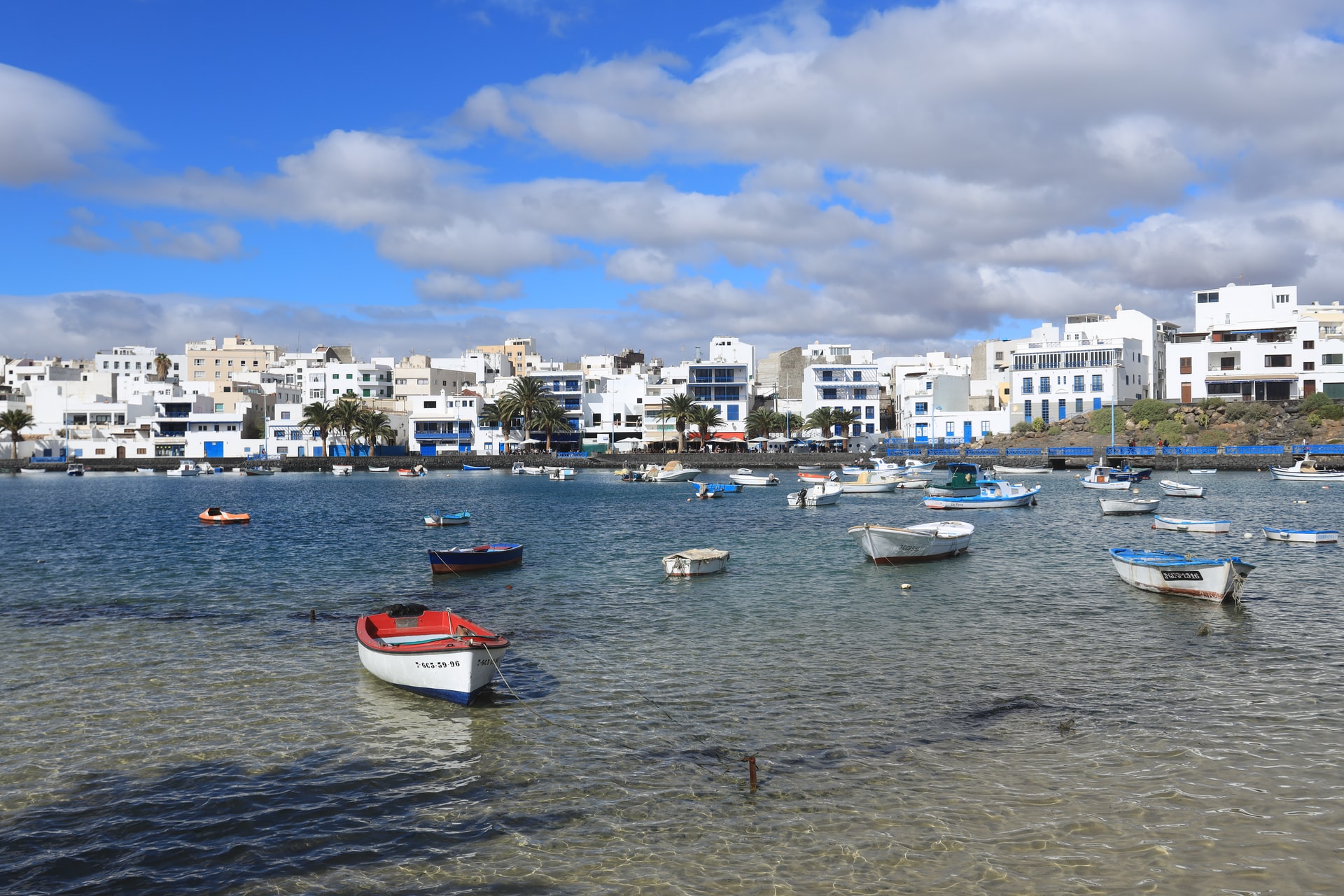
- Castillo de San Gabriel: A fortress built in the 16th century to protect the city from pirate attacks. It now houses a museum with exhibits depicting the history of the island
- Castillo de San José: This castle was built in the 18th century which is home to an important museum of contemporary art.
- Charco de San Gines: This picturesque lagoon in the heart of the city is surrounded by traditional fishermen’s cottages and a fine selection of restaurants.
- Playa del Reducto: This is a popular urban beach near the centre of Arrecife which attracts many city dwellers.
- Museo Arqueológico de Lanzarote: This small museum in the centre of Arrecife showcases the history of the island and its people.
Go Shopping at the Teguise Sunday Market
The historic town of Teguise in the north-east of Lanzarote was the capital of the Kingdom of the Canary Islands during the 15th century. It also served as the island’s capital until Arrecife took that role in 1852. The town is centred on Plaza San Miguel Plaza which hosts a popular street market every Sunday morning from around 9am until 2pm. A variety if stalls sell all kinds of local crafts, souvenirs and typical Canarian food dishes. Interesting purchases include handmade jewellery, leather goods, baskets and ceramics. After exploring the market you’ll find plenty local bars and restaurants for lunch.
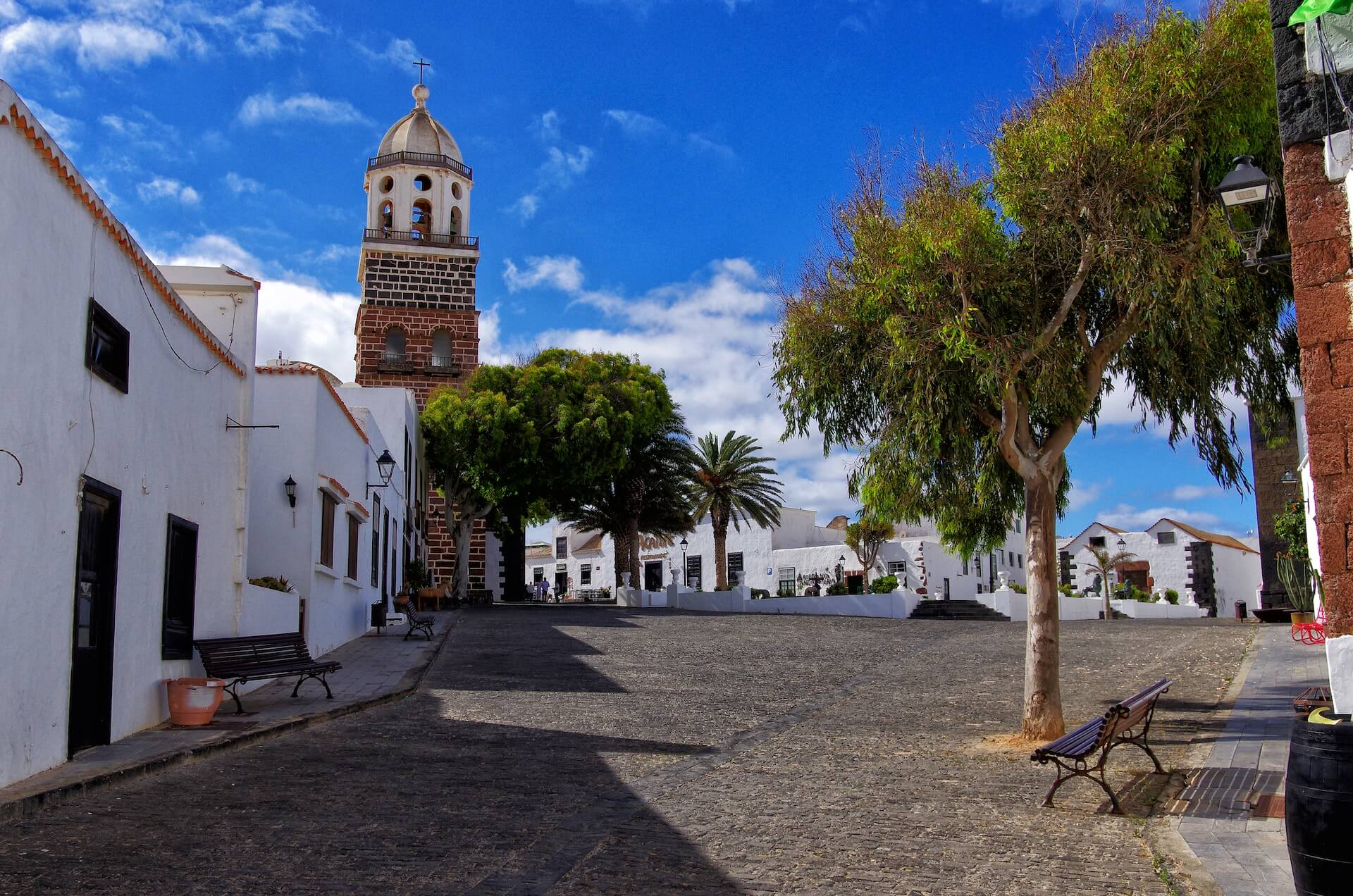
Take a Boat Trip
Lanzarote is surrounded by beautiful, crystal-clear waters and taking a boat trip is a great way to explore the coastline and see some of the island’s hidden gems. There are several types of boat trips available, from leisurely sightseeing tours to high-speed jet boat rides and dolphin watching trips. Some popular destinations include the stunning Papagayo beaches, the cliffs of Los Hervideros and the small island of La Graciosa.
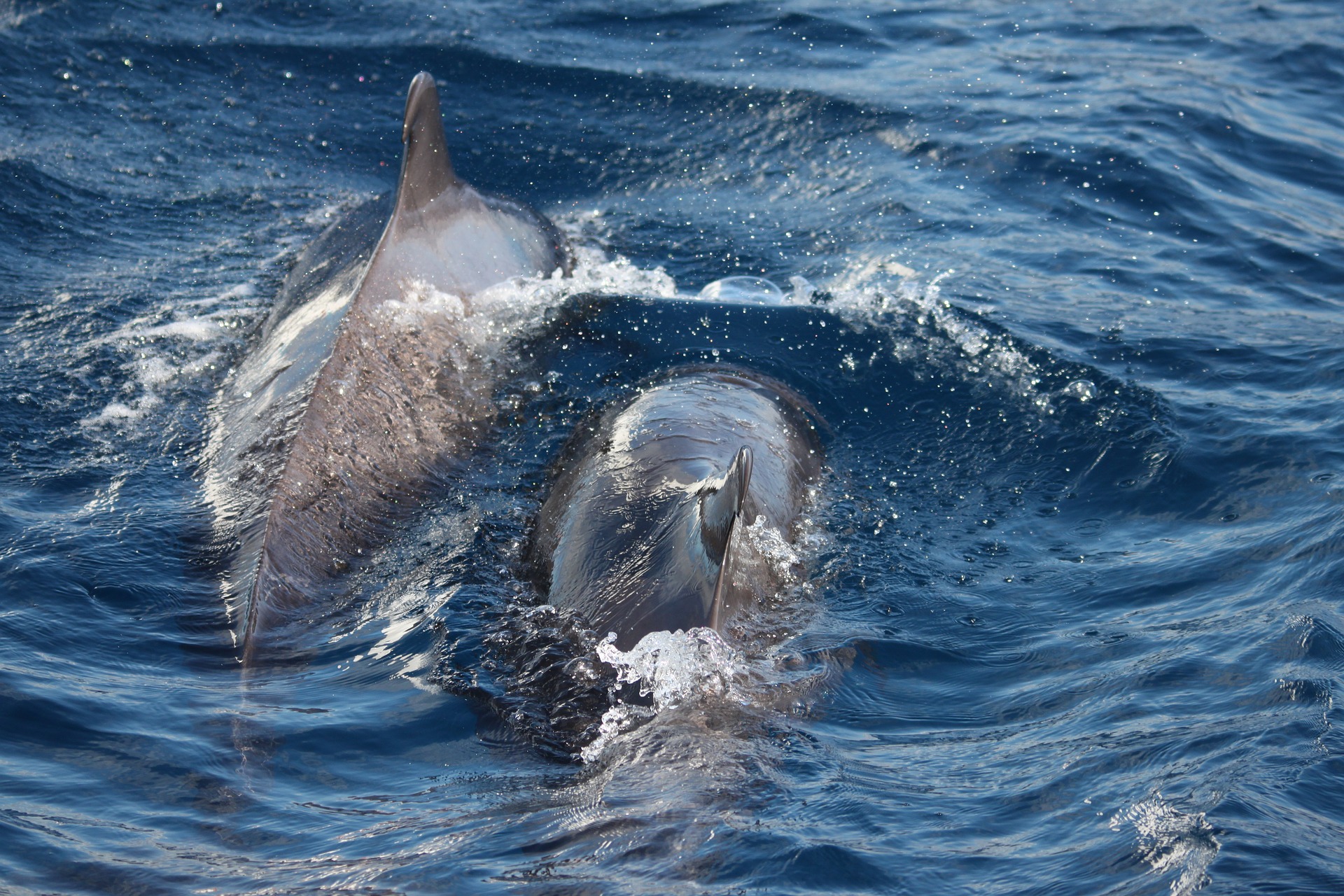
Alternatively, you can hop on a ferry to the neighbouring island of Fuerteventura and spend a day exploring its beautiful beaches and landscapes. A highlight of such a trip is a visit to the Corralejo Dunes National Park which is a protected area with sand dunes stretching for several kilometres.


